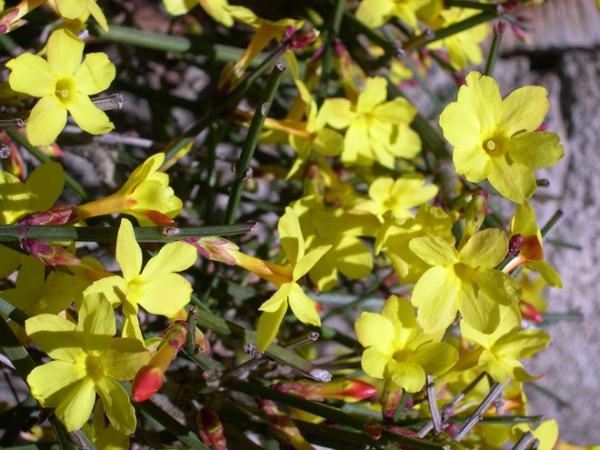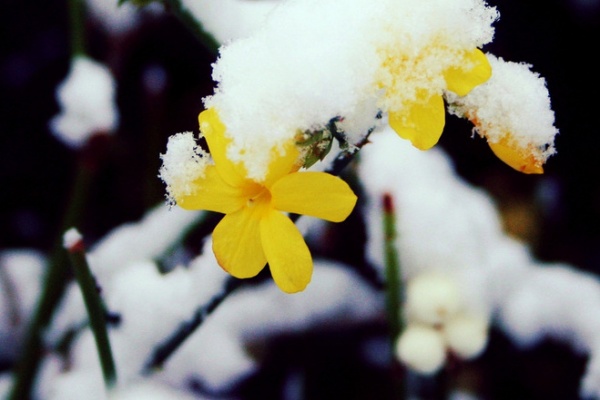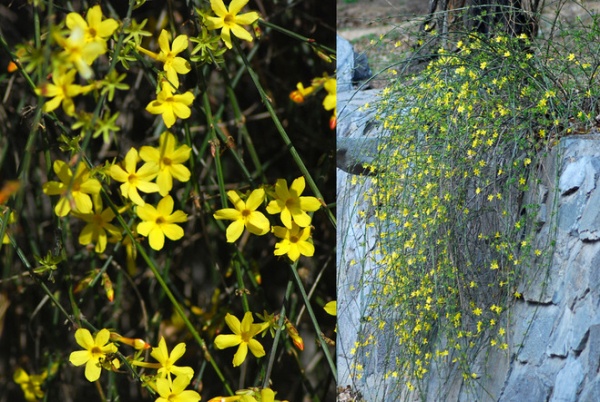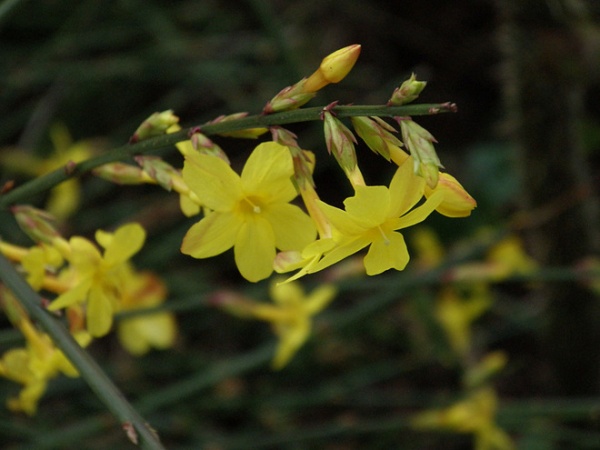Great Design Plant: Winter Jasmine Gladdens Snowy Gardens
http://decor-ideas.org 12/26/2014 00:13 Decor Ideas
Just when you can’t bear the thought of another gray day, winter jasmine comes to the rescue. Cascading bright green branches are covered with sunny yellow flowers from Thanksgiving to early spring, not missing a beat — even when it snows.
Although often referred to as a vine, this is a scrambler rather than a climber, and as such it can be used in several ways to add a bright note to the winter garden. The lax stems can be allowed to tumble down a slope or cascade over a low wall, or they can be tacked loosely to an arbor and allowed to festoon from the top. However you use winter jasmine, its cheery flowers will bring a ray of sunshine to your winter garden.

Botanical name: Jasminum nudiflorum
Common name: Winter jasmine
Origin: Native to China; introduced to the West by the Scottish explorer Robert Fortune in 1843
Where it will grow: Hardy to -10 degrees Fahrenheit (USDA zones 6 to 9; find your zone)
Water requirement: Average
Light requirement: Full to partial sun
Mature size: Up to 10 feet tall and 7 feet wide, depending on how you plant it
Benefits and tolerances: Bees enjoy the early source of nectar, and birds may nest in its twiggy branches.
Seasonal interest: This is a deciduous vine, but its main season of interest is from November to March, when the leaves have fallen. The bare stems are then studded with an abundance of yellow, star-shaped flowers, each one emerging from a rose-colored bud.
When to plant: Spring or fall

Distinguishing traits:
Bright green stemsProfuse yellow flowersMakes a great cut flowerBlooms in winterNeither frost nor snow stops it from floweringCan be used in a variety of ways

How to Use It
Winter jasmine is not a true vine, although it is often referred to as such. I consider it a scrambler rather than a climber, and it can fill many roles in the garden. However you use it, be sure to plant it where you can enjoy the color from inside the home on a cold, gray winter day.
As a ground cover: Left unchecked winter jasmine will cover the ground with a rather unruly tangle of stems. When grown in this way, it looks best tumbling down a slope or stream bank, where the branches can cascade.
To soften retaining walls: One of my favorite ways to grow this is over a retaining stone wall where its young bright green stems and profuse flowers can be readily appreciated.
On a fence or arbor: Since winter jasmine does not climb on its own, the stems have to be attached to the fence or arbor posts. There are two easy ways to train its multiple stems.
Attach a trellis to the fence or wrap bird netting around the arbor post and tie the branches on loosely with soft twine.Use galvanized wire; add a series of horizontal, parallel lines on a fence or run a length of wire in a spiral fashion up a post using screw eyes to hold the wire in place. The branches can then be tied in the same manner as above.When the branches reach the top of the structure, you can let them drape down in a casual manner. Older branches become woody and can be distinguished from younger stems because they turn brown. At this point they are less flexible, so be sure to tie winter jasmine to its support regularly.

Planting Notes
There are several ways that winter jasmine can be used in the garden, but regardless of its role, there are two key techniques to be aware of.
Pruning: When flowering has finished in spring, cut back the new growth by two-thirds to avoid bare stems the following year, since this plant blooms on new wood. To keep the vine smaller, you can also hard prune by cutting into the older brown stems to generate fresh growth.
Propagation: Winter jasmine can be easily propagated by layering. To do this allow new stems to lie on the soil surface and keep them in place with a few small rocks or landscape pins. Roots will grow from the stem at that point. The new plant can be separated by cutting or left in place to create a wider branching structure. Be aware that winter jasmine does this naturally, so if you wish to prevent your vine from becoming a ground cover, pull those branches away from the soil or remove them completely.
Photo by Amanda Slater
More: What to do in your garden by region
Related Articles Recommended












